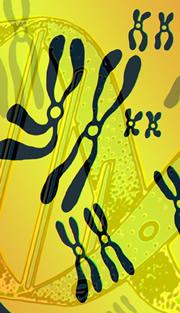 How can a person with two X chromosomes be a man? In more ways than one...Punchstock
How can a person with two X chromosomes be a man? In more ways than one...PunchstockThe battle of the sexes continues to rage — right down to the level of our genes.
A gene has now been discovered that, when mutated, turns girls into boys. The finding advances, but also complicates, our understanding of how sex is determined by our genes.
In people, almost all men carry two different sex chromosomes (XY) and women are XX. But there are some (extremely rare) exceptions to this rule. It is possible to have XX men, for example.
</p><p>This female-to-male sex reversal almost always happens when a certain gene called SRY, usually carried on the Y chromosome, accidentally ends up on the X chromosome inherited from the father.
Other genes have been found to muddle up sexual identity, making the resulting child neither fully male nor fully female. But in most cases of anatomically complete XX men — who have functional testes, but without a Y are infertile — SRY is involved. For this reason, it has long been called the gene that defines 'maleness'.1
But now Giovanna Camerino of the University of Pavia in Italy and colleagues have found another gene that is equally important to the process.
In the family
The team studied a family in which four brothers were each XX. None carried the 'male' SRY gene. Instead, the team reports in Nature Genetics2, they each have a mutation in a gene called RSPO1.
It seems that sex is determined in humans by a cascade of genes. At a crucial junction in this process lies a gene called SOX9, which in males is switched on by SRY, causing testis development. In females, the researchers now suggest, SOX9 might be typically switched off by RSPO1, which, via other genes in the cascade, leads to the development of ovaries. In the brothers, it seems the mutated RSPO1 gene could not fulfil its switching-off role, leaving SOX9 on and leading to male development.
This theory fits with animal studies: mice with two X chromosomes that have their SOX9 expression turned back on form testes.3
Active turn on
ADVERTISEMENT
The idea stands in contrast to previous theories that said that female development was basically the default that happens in the absence of genes to direct maleness. "What is really important is that suppression of male and induction of female development is an active process," says Andreas Schedl of INSERM, the French National Institute of Health and Medical Research in Nice, who is a co-author on the paper. " RSPO1 clearly plays a key role in this process." The identification of this gene, he says, may be as important to the field as the identification of SRY.
RSPO1 encodes for a protein that is something of a multi-tasker — as well as being a key player in the sex-determining pathway, it also causes all the males in this family to suffer from a skin-thickening condition, and predisposes them to skin cancer. Understanding how it does this might help researchers to confirm its exact role in sex determination.
The next step, say the researchers, is to find out what happens when the RSOP1 gene is knocked out of mice.
Visit our mutationturnsgirlsinto.html">newsblog to read and post comments about this story.
